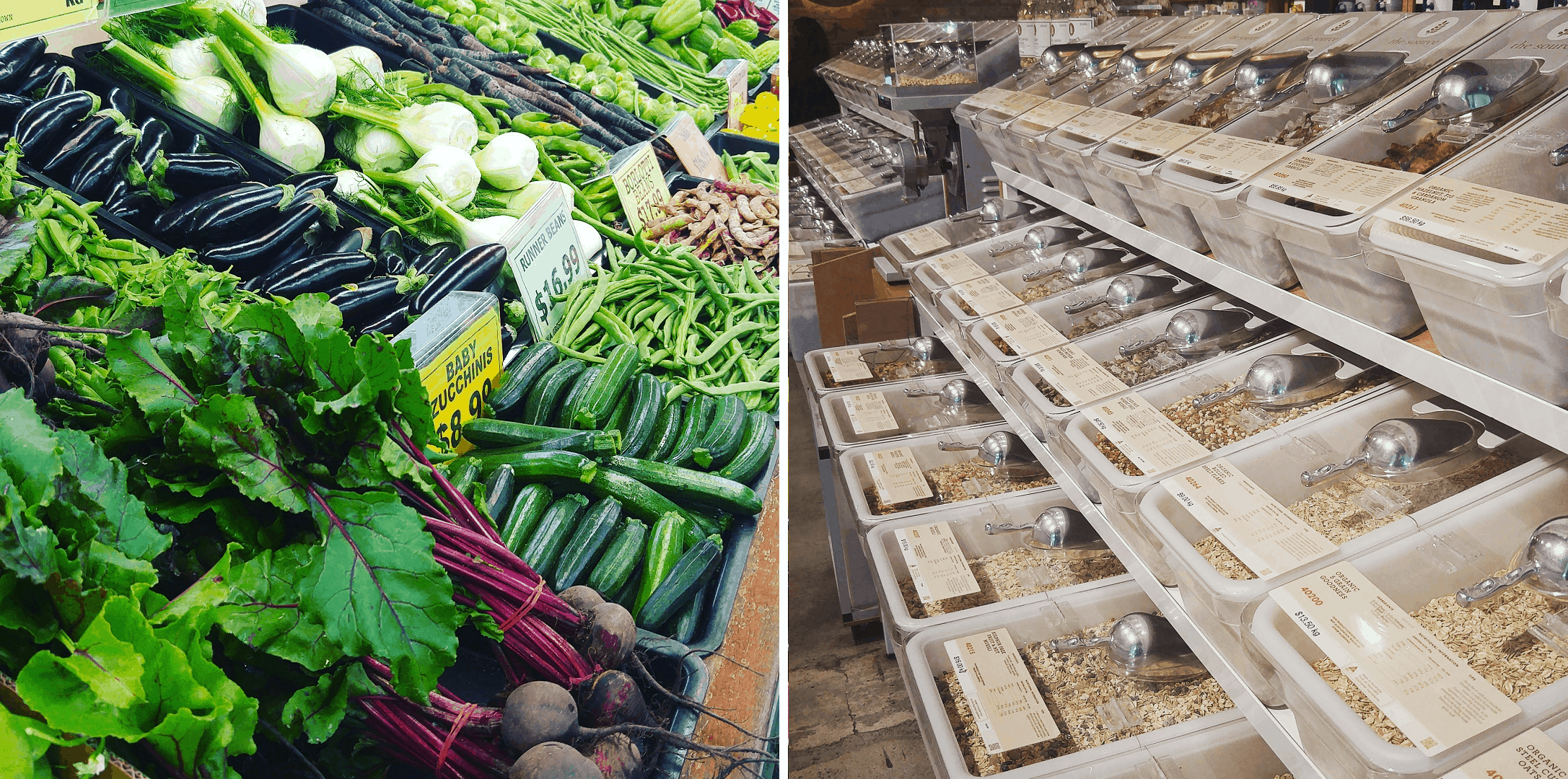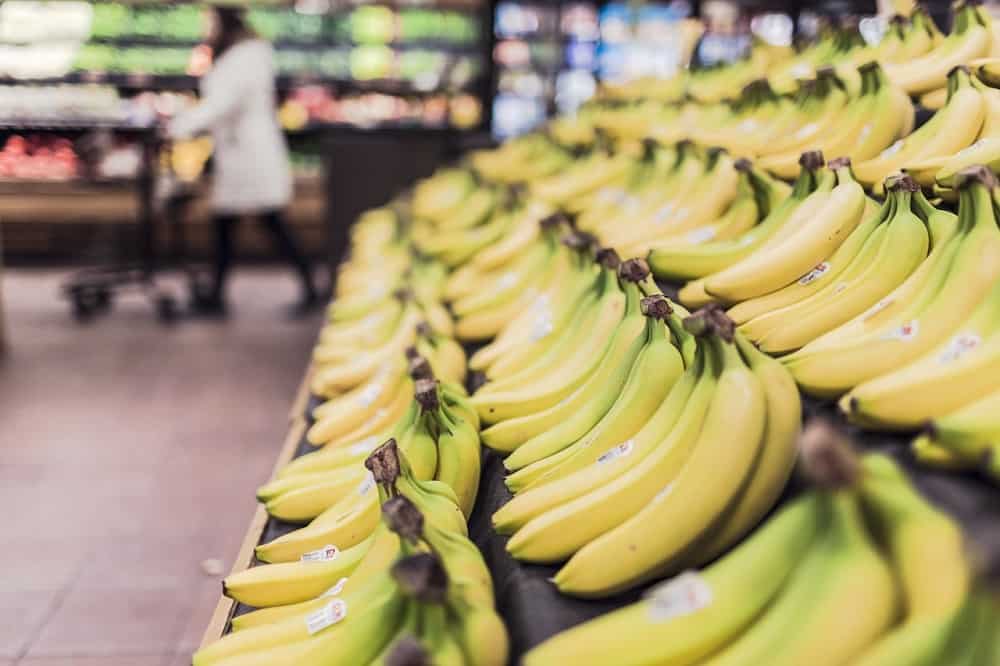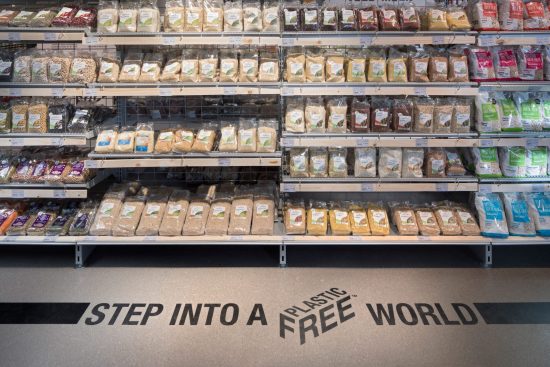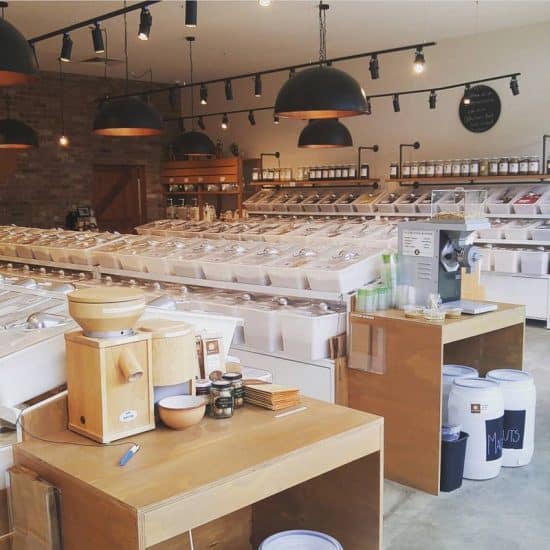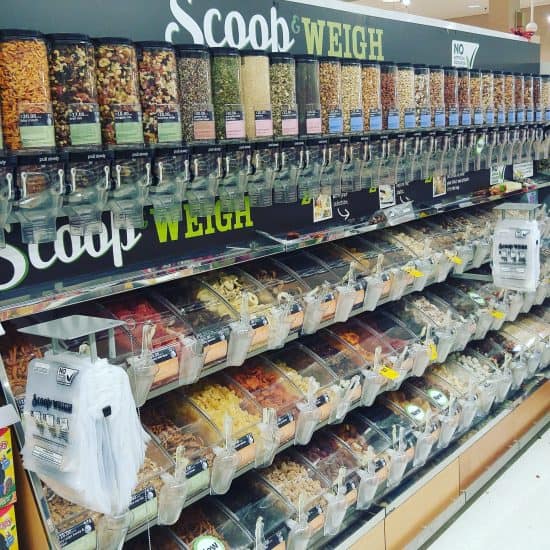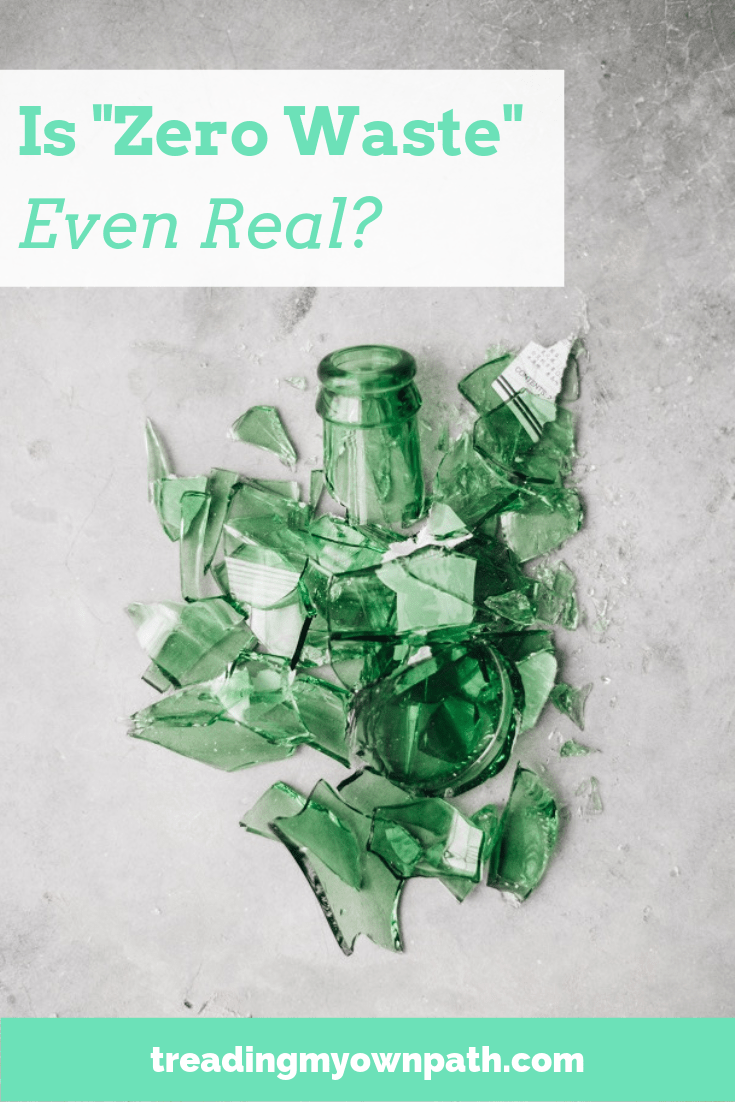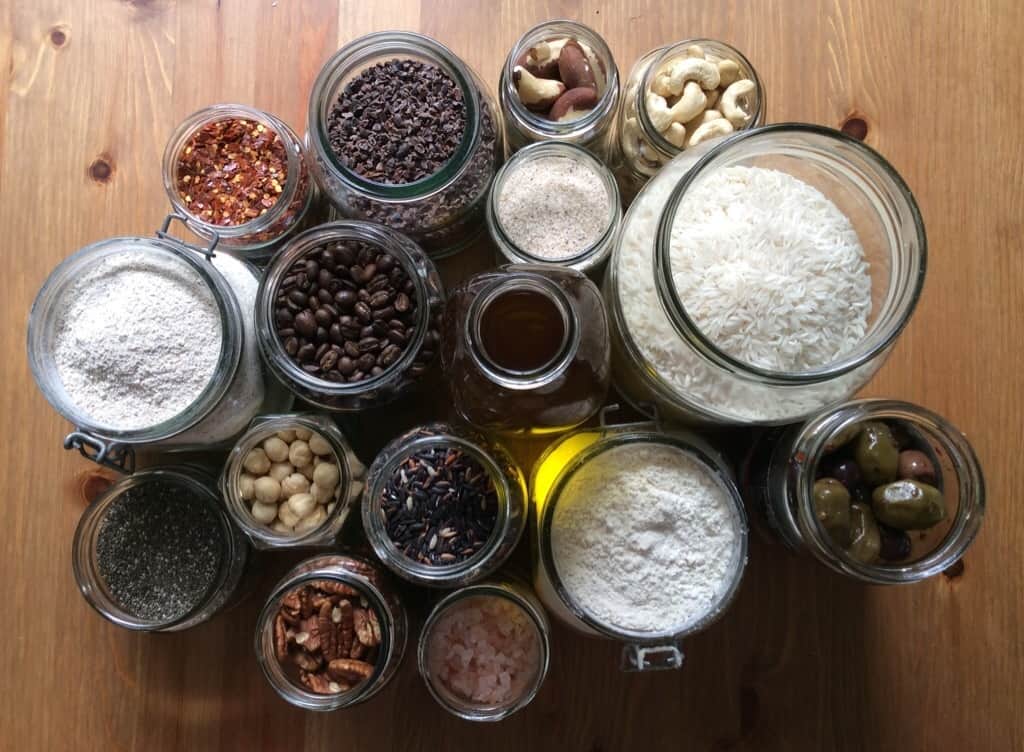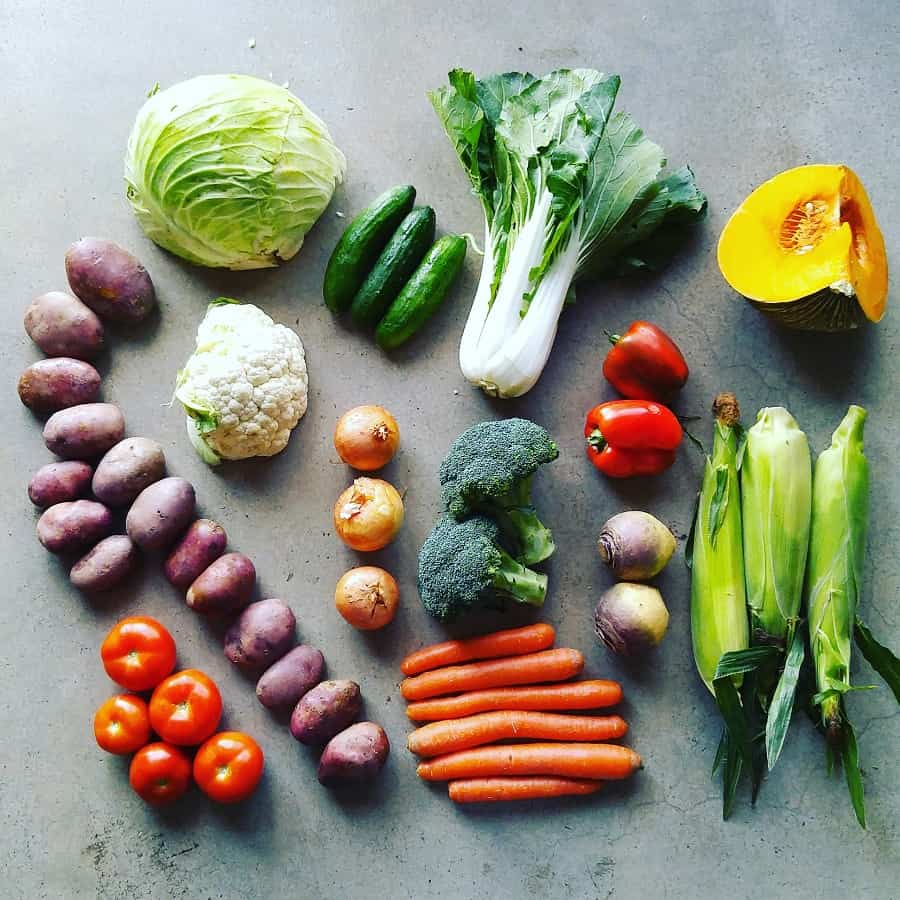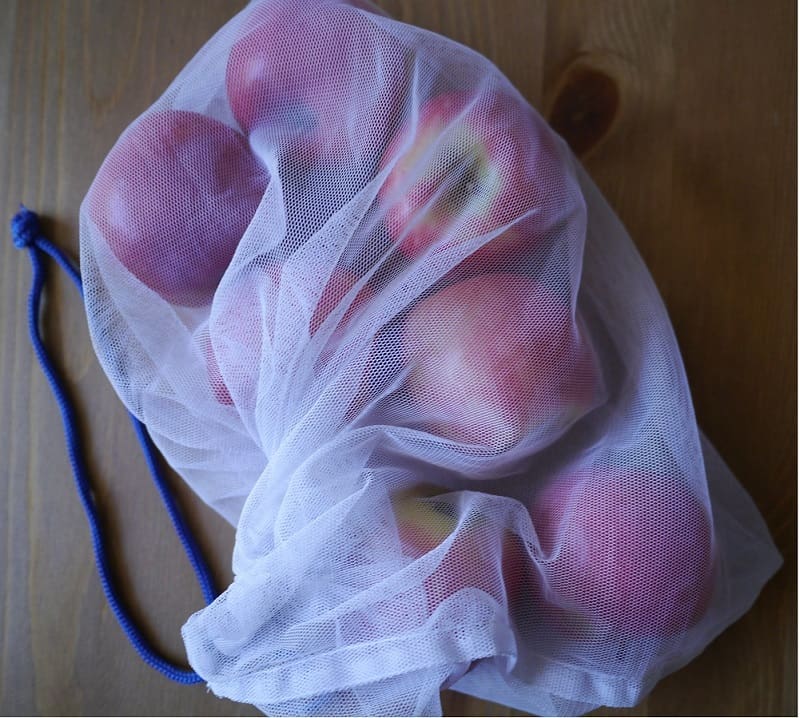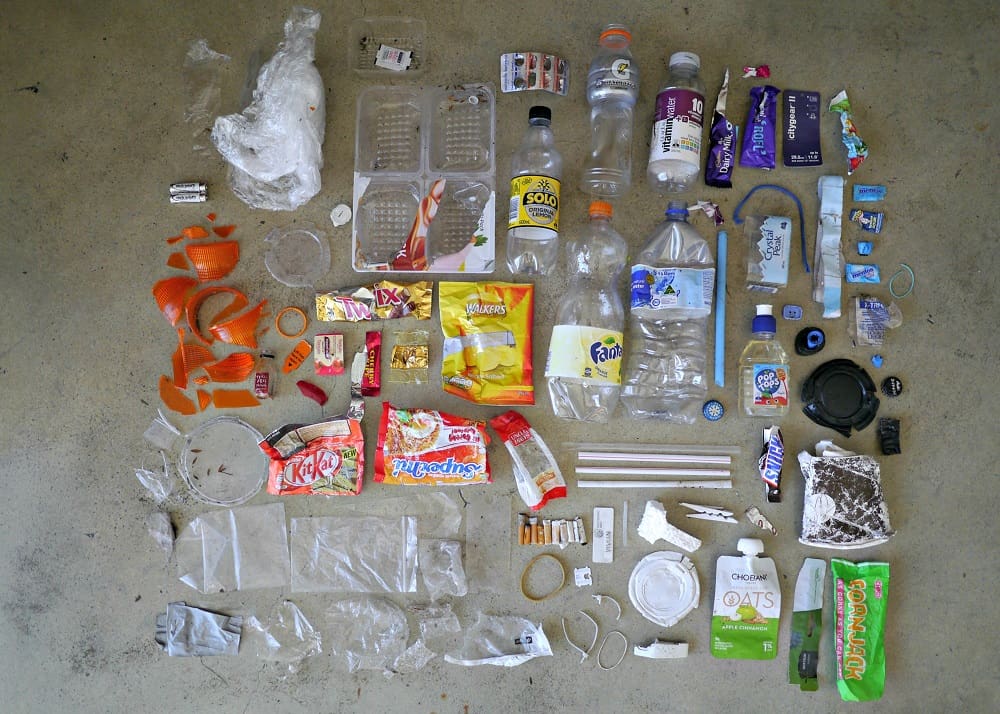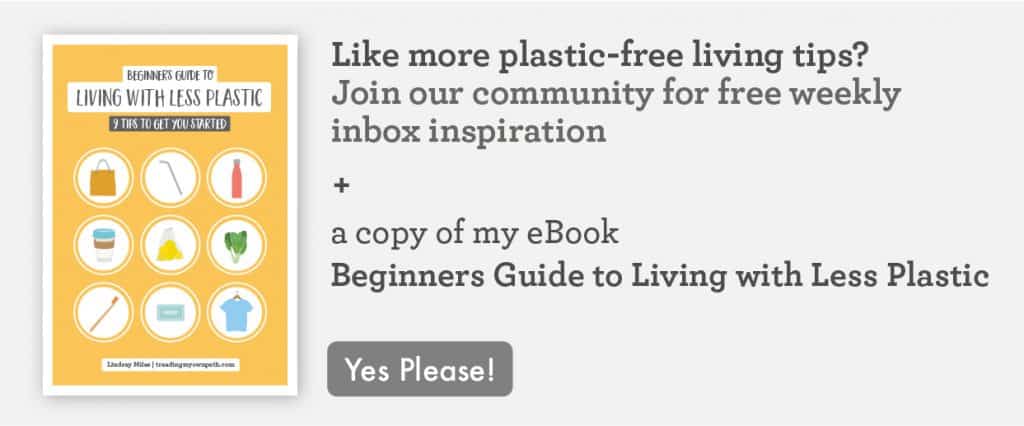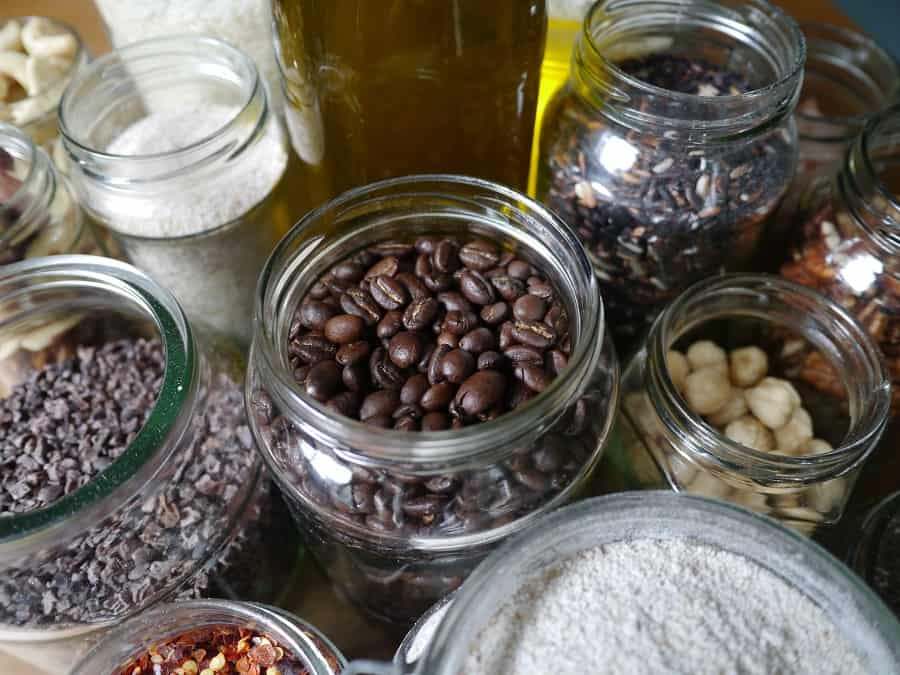Where I Find My Zero Waste Consumables (Groceries and Food)
This week I headed off on my six-monthly journey up to the Swan Valley, which is the other side of Perth, to stock up on some bulk products that I simply can’t get anywhere else.
It made me think: there’s plenty of places I talk about often, because I use them often (such as my local bulk store, or my local veg box delivery).
But there are other places where I source zero waste items that I talk about less often.
If I’m going to paint a complete picture, I thought it might be helpful to explain where I source ALL the things I use.
Of course, if you live in Perth, these lists will probably be extra useful! If you’re not in Perth, hopefully it will give you some ideas about the kinds of places you might be able to source products in your own area.
At the very least, it might open your mind to new alternatives.
There’s a lot to say, so rather than overwhelm you, I’ve divided it up into sections. Today I’m talking about zero waste consumables (food and grocery items).
I’ll follow up next week with a post about consumable personal and cleaning products, and then with non-consumables (the buy-me-once type items) in the coming weeks, so stay tuned.
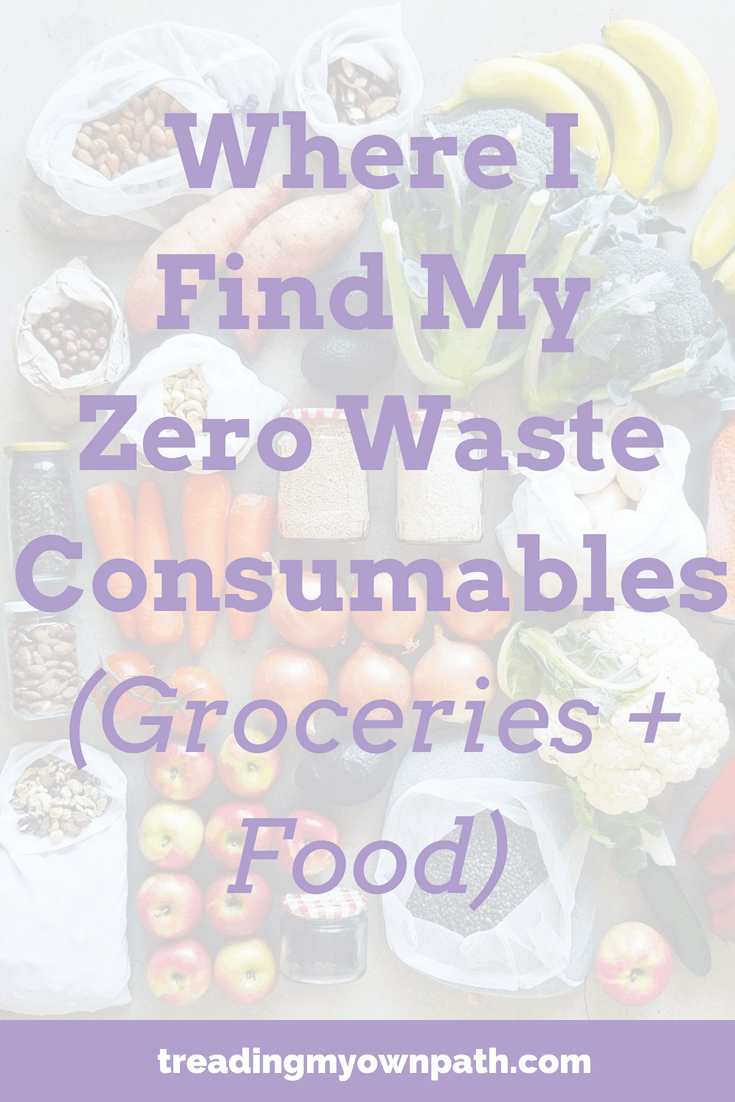
Where I Source Zero Waste Consumables
By consumables, I mean things that run out, get used up and need replacing. Things like food, personal care products, and cleaning products.
Whilst I source things from a number of different places, I’m not going to all the places all of the time. Some places I only visit twice a year. Others I visit weekly. Over time I’ve established a routine that works for me.
Zero Waste Grocery Shopping: Dry Goods
This is the one that gets talked about all the time, because food runs out more quickly than anything else (well, it does in my household)!
Bulk food stores are where I source all of my dry goods (pantry staples like rice, flour, lentils, pulses) and my liquid products (tahini, soy sauce, macadamia oil).
Specifically, I purchase about 95% of my bulk goods from The Source Bulk Foods (my local store is in Victoria Park, about 5 minutes from my house). They have a great range, the store is spotless and they stock a lot of local produce (I particularly like the Australian-grown nuts and quinoa, but plenty of their products are also home grown).
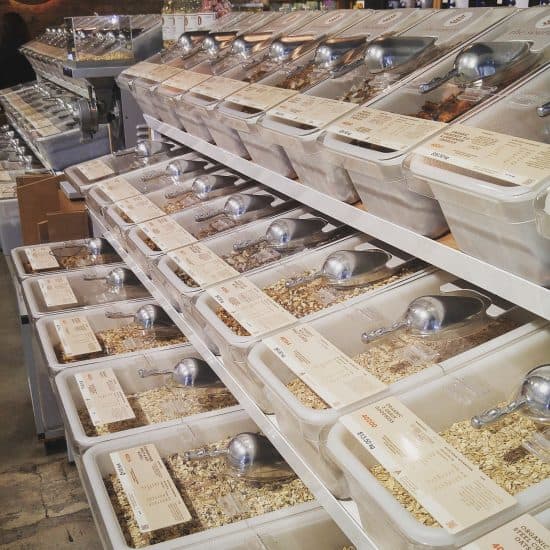
There are a few groceries I don’t buy from the Source Whole Foods:
I buy vermicelli pasta nests from Swansea Street Markets in East Victoria Park (The Source Bulk Foods don’t stock regular pasta, only the gluten-free kind).
I buy wakame seaweed (a bit of an obscure ingredient) and white vinegar for pickling from Manna Whole Foods in South Fremantle (the only place I’ve ever seen them both).
I occasionally have a moment of weakness and buy a bar of good quality dark chocolate wrapped in foil and paper from a local grocer, or even (if I’m desperate! It happens!) from the supermarket.
I buy coffee from local coffee place Antz Inya Pantz in East Victoria Park, who roast their own beans.
I source honey from my neighbour, who keeps bees.
I collect olives from public trees with a group of friends every April, and press them locally to get a year’s supply of olive oil.
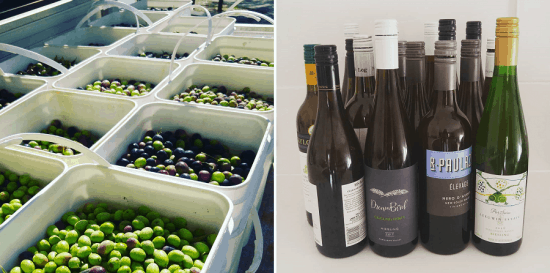
Zero Waste Grocery Shopping: Fresh Produce
The fresh produce that buy is fruit and vegetables, bread, and deli items like olives.
I no longer buy fish, meat or dairy products for my personal consumption. I do buy pet mince, chicken necks and chicken frames for my greyhound from The Butcher Shop in the Park Centre, East Victoria Park. This butcher (like many independently owned businesses) is happy to accept and fill my own containers. I use old yoghurt tubs I sourced from my local Buy Nothing group as I don’t mind if these get lost. I usually drop the containers off and they will call me once they have been able to fill them for me to collect.
I have a homegrown veggie patch, which provides some of my fruit and veg – dependent on how much time I have and how much I can put into it. I’ve always got herbs (mint, parsley, oregano, thyme, coriander in winter and basil in summer), there’s always some kind of greens, capsicums, chillis and sweet potato.
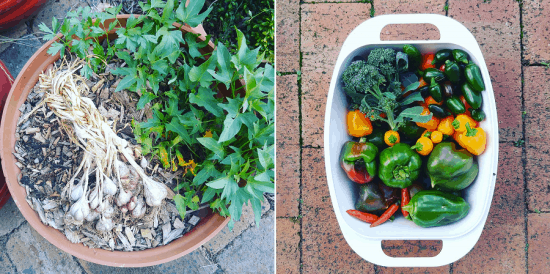
There’s also a few fruit trees. Lemons are available almost all year round, there’s a passion fruit vine and at the moment, guavas and kumquats.
I order a veg box once a fortnight from The Organic Collective, based in Hamilton Hill, which is delivered direct to my doorstep.
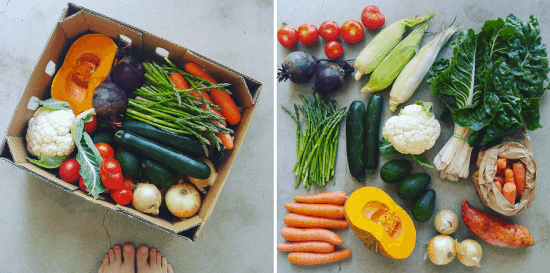
I top my veg box up with fruit and veg shopping at Swansea Street Markets in East Victoria Park, who have an excellent range of loose produce (including fresh herbs, peas and beans, salad leaves and other harder-to-find items).
They also stock a lot of West Australian and Australian produce, and label their Country of Origins properly.
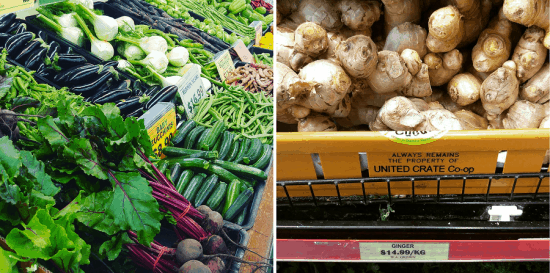
My friends have a market garden and fruit orchard, and run the Guildford Food Hub (in Guildford) on Saturday mornings. I sometimes get fruit from them.
I occasionally pop into the supermarket to top up things like onions, avocados and mushrooms.
Swansea Street Markets also has a great deli counter. I occasionally buy olives and other antipasto type things from here, using my own jars (which they happily weigh before they fill). They also sell cheese and cold cut meats.
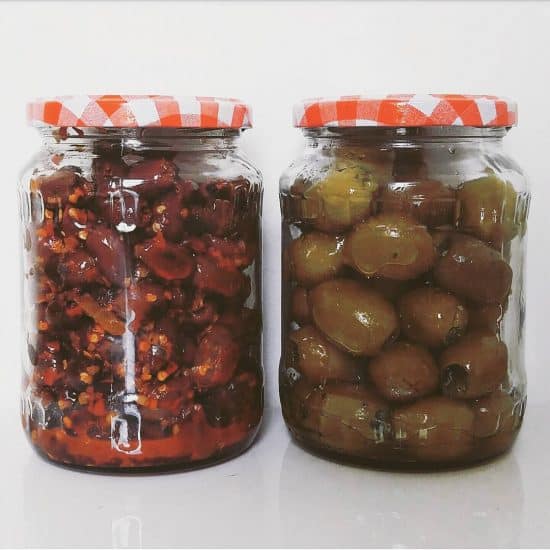
If I’m in Fremantle, Kakulas Sister has an excellent deli counter also, and are happy to tare and fill containers.
I don’t go to the Farmers Market regularly, but when I do I look out for what’s in season: boxes of strawberries, boxes of tomatoes, loose cherry tomatoes and other hard-to-find-without-packaging items.
My two favourite markets are the Subiaco Farmers Market (open on Saturday mornings) and the Growers Green Farmers Market in Beaconsfield/South Fremantle (open on Sunday mornings.
If I’m at the Farmers Market, I always buy bread. My favourite Wild Bakery has a stall at both Subiaco and Growers Green. Otherwise their actual bakery is located in South Fremantle. I pop in when I’m in the area, or ask my friend who lives around the corner to pick up a loaf for me if we are planning to meet.
I also buy bread from my other favourite bakery Bread in Common (in Pakenham Street, Fremantle).
As neither are local to me, I tend to buy two loaves at a time and freeze one. If I run out, I don’t eat bread until I stock up again. There are other bakeries close to me, but I really like good bread, and the others just don’t compare.
I also make my own bread, but that tends to be a little seasonal.
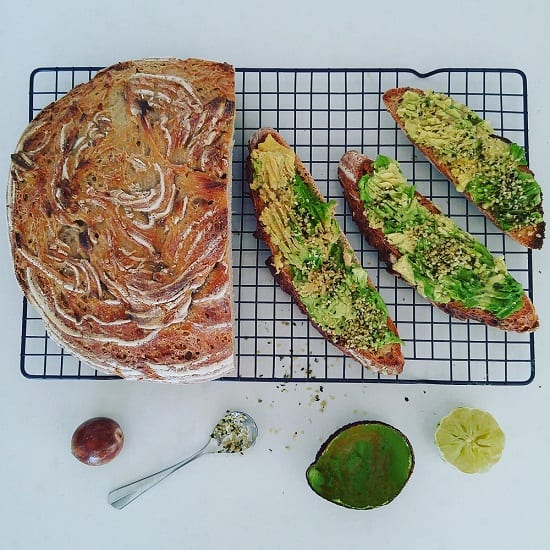
Something that I buy as a treat occasionally is ice-cream. There’s an amazing ice-cream shop in Victoria Park called Pietro Gelateria, with a small-but-mighty vegan ice cream selection (most of their offering is traditional dairy ice cream).
One of my favourite things is the plastic-free ice creams on sticks, mostly for the novelty. I take a Pyrex to the store, they pop two in, and I bring them home for later.
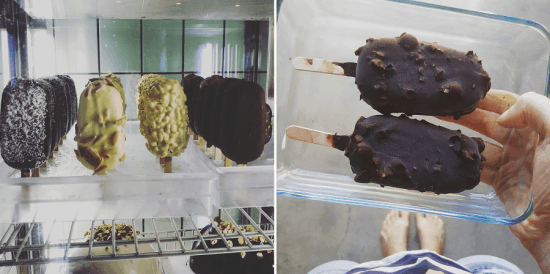
Zero Waste Groceries: Things I Make
I tend to make things if they are easy, far more delicious when made from scratch, and/or unavailable without plastic or excessive packaging.
Some of the simplest things I make are apple cider/apple scraps vinegar (literally an apple core, some water, a bit of sugar and some stirring), refrigerator pickles (a 10-minute job), pesto and hummus.

Back when I ate dairy, I’d make my own yoghurt (another ridiculously simple thing to make).
Things that take a little longer (but are oh-so worth it) are sourdough crackers and chickpea falafels. With falafels, I make a huge batch and freeze at least three-quarters. This also stops me eating the entire lot in one day.
Zero Waste Food: Takeaway
I rarely get takeaway. I prefer to eat in, and use real plates and metal reusable cutlery. I’m more likely to take home leftovers than actually order takeaway, and I always pack a reusable container when I head out, just in case.
I hope that’s given you some insight into the kinds of things I buy, and where from, and maybe some ideas for things you could incorporate into your own life. If you’re in Perth you might like to visit some of the places I’ve listed. If you’re not, maybe there’s something similar close to you.
In my experience, when it comes to plastic-free and zero waste living, there’s always a lot more options than we first expect.
Now I’d love to hear from you! Is there anything you’re trying to source that I haven’t covered? Anything you’ve had success with that you’d like to share? Anything that needs more explanation, or any tips you can add? Any other questions? Please share your thoughts in the comments below!
[leadpages_leadbox leadbox_id=140b48fc6639c5] [/leadpages_leadbox]

